19+ SAMPLE Student Learning Contract
-
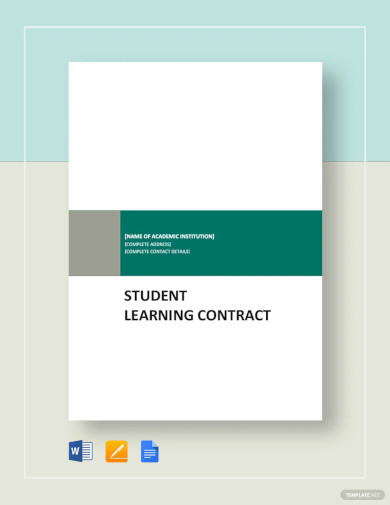
Student Learning Contract Template
download now -
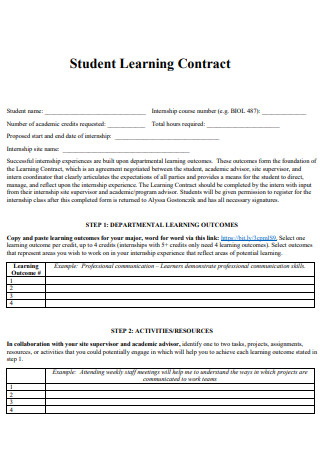
University Student Learning Contract
download now -

Social Work Student Internship Learning Contract
download now -
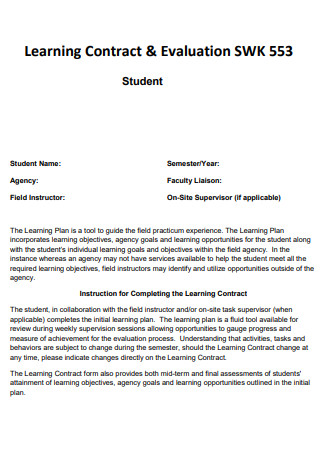
NursingStudent Learning Contract & Evaluation
download now -
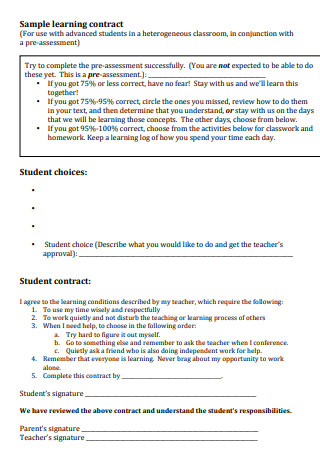
Academic Advanced Student Learning Contract
download now -
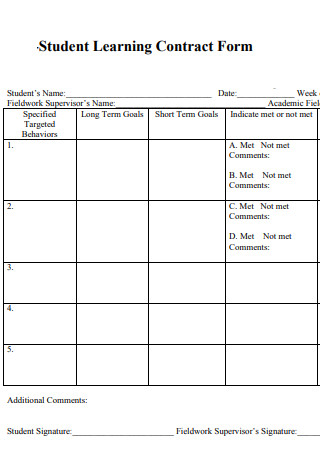
Student Learning Assignment Contract Form
download now -
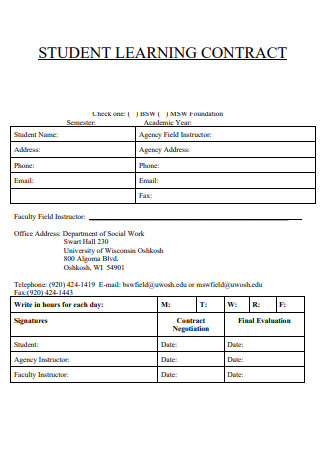
Sample Student Learning Classroom Contract
download now -
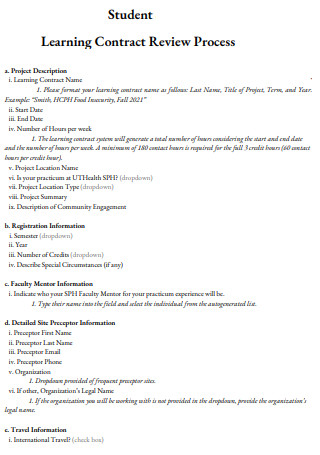
Student Learning College Contract Review Process
download now -
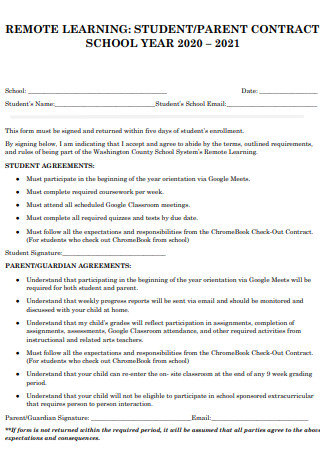
Student Individual Parent Learning Contract
download now -
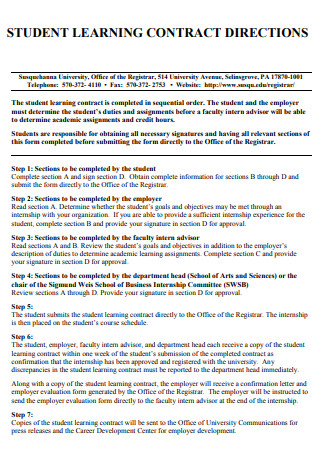
Student Education Learning Contract Directions
download now -
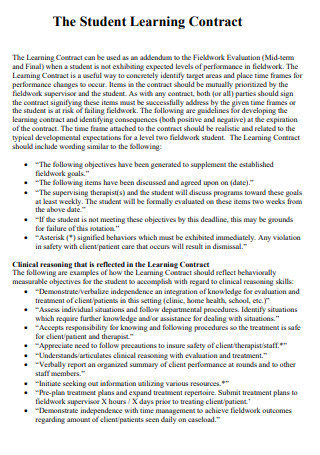
Elementary Student Learning Contract
download now -
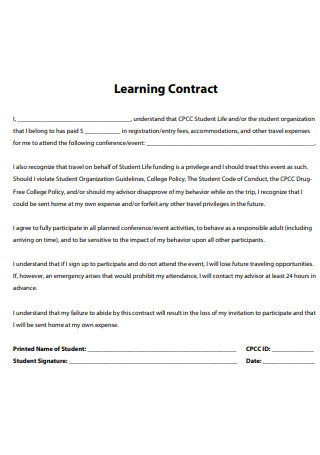
Student Grade Club Learning Contract
download now -
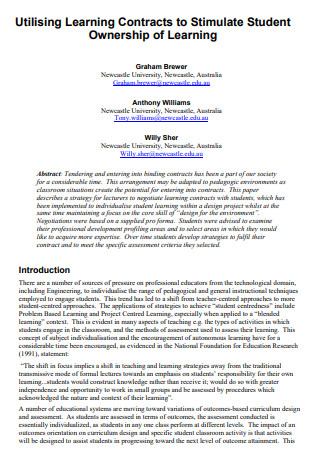
Student Reading Utilising Learning Contract
download now -
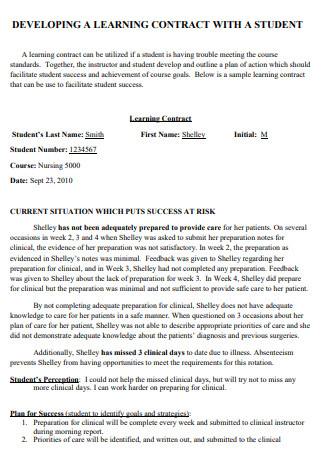
Developing Student Health Learning Contract
download now -
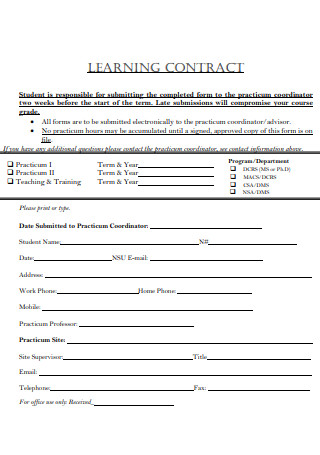
Simple Student Learning Contract High School
download now -
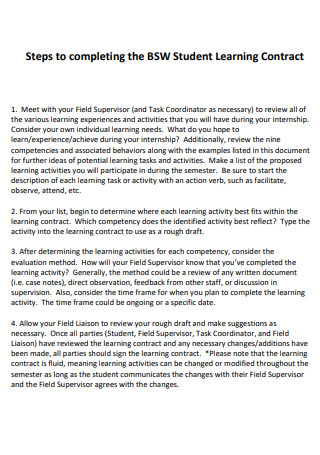
Steps for Student Work Completion Learning Contract
download now -
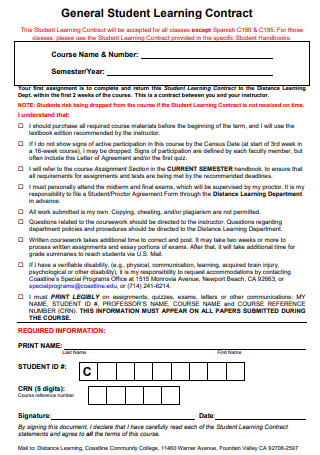
General Student Home Learning Contract
download now -
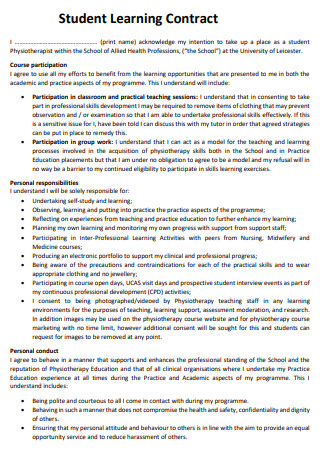
Base Student Remote Learning Contract
download now -
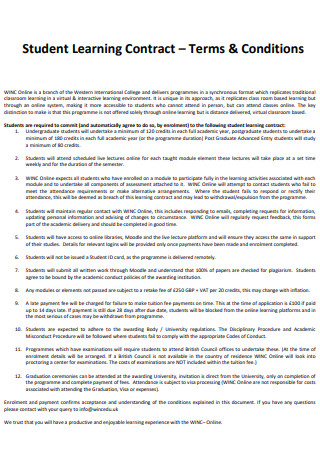
Student Improvement Learning Contract Terms & Conditions
download now -
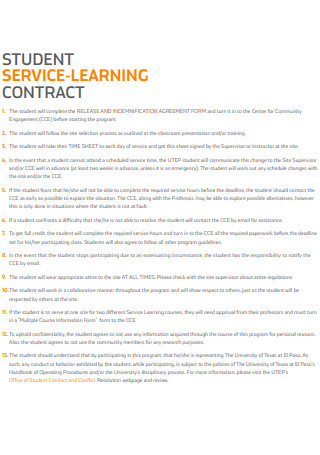
Student Homework Service Learning Contract
download now
FREE Student Learning Contract s to Download
19+ SAMPLE Student Learning Contract
What Is a Student Learning Contract?
Benefits of Student Learning Contracts
Components of a Student Learning Contract
How To Create a Student Learning Contract
FAQs
What is the importance of learning contracts?
Do learning contracts work?
How do you create a contract?
What Is a Student Learning Contract?
A student learning contract, or a student goals contract, is a voluntary and student-created agreement that outlines student actions and activities to achieve their goals and objectives towards academic success. Along with the actions that a student presents, a teacher or instructor must also assess the production of specific proof that indicates the accomplishment of goals. Student learning contracts provide academic structure and support, especially to struggling learners. It also helps students to reflect on their learning styles and processes. Student learning contracts are also growing in popularity as it seeks to engage students in their learning through the change of assessment methods from teacher-centered to more student-centered approaches. The trend also points to the prevalence of a self-centered learning style. Aside from a student goal contract, other terms for student learning contracts include learning agreements and negotiable learning agreements. The main essence of writing a student learning contract is to allow a learner to identify their goals and the actions they need to accomplish them according to their skills, knowledge, and abilities.
According to a comparative study entitled Perceived benefits of the use of learning contracts to guide clinical education in respiratory care students, 21 out of 24 students have responses to the study that shows a general agreement on using learning contracts with confidence. The results also show an increase in student autonomy and motivation in gaining educational scholarships through the use of learning contracts.
Benefits of Student Learning Contracts
Learning institutions and other business organizations utilize learning contracts to help students and individuals to realize their goals through analyzing their capabilities through self-engagement. The document promotes different benefits for individuals that use them. The section presents the advantages of using student learning contracts to encourage more students, teachers, and educational institutions to practice writing learning contracts.
Components of a Student Learning Contract
Completion of student learning contracts happens in the presence of a teacher and student. While there are variations in writing student learning contracts between different institutions, fundamental elements must be present in the document. The section below highlights these components, along with their descriptions.
How To Create a Student Learning Contract
Writing student learning contracts helps students create a roadmap that makes them look at their current capabilities and habits and develop the skills to determine the best course of action to address learning needs and gaps. In a learning contract, there are various steps students need to follow to accomplish their goals. Below are useful steps in creating a comprehensive student learning contract.
-
1. Identify the Learning Objectives You Want to Achieve
The first step in writing a student learning contract is to define the objectives you want to achieve in an academic period. In writing the learning objectives, observe the SMART goal-setting process. For it to be specific, a student must provide a detailed description of their goals. It must also be measurable, meaning there is a way to tell a student achieved their objectives. For it to be achievable, there must be various ways, techniques, and procedures for students to accomplish their plans. For the objective to be realistic and time-bound, a student must have the capability to complete them within a given period.
-
2. Indicate Resources and Strategies to Accomplish Objectives
When writing the student learning contract, a student must present available resources and effective strategies to reach their goals. In identifying resources, a student must specify possible offerings of online courses, reading materials (ebooks, hardcovers, softcover books), availability of study groups, library resources, computer access, and finances. After defining the resources, determine their availability, and select those that match their capabilities. It is critical to know a student’s learning style as it greatly affects their strategic plan to succeed in their studies.
-
3. Identify Possible Issues and Viable Solutions for Them
A student must indicate possible problems that they can encounter during classes or study plans periods. Anticipating these issues will make it easier to solve and overcome them, staying on the roadmap you have established. Think of all the possible scenarios and make a note of them. Afterward, identify viable solutions to solve these obstacles, especially those with the highest likelihood of manifesting. Having a backup plan when these problems arise will save time and effort, allow students to focus on their studies, and free them from any worry.
-
4. Specify a Timeline to Achieve Objectives
Each item on the list has different deadlines, depending on the activity or task at hand. When writing the planned timeline, set a realistic and achievable date, then work on the strategies to take. Learning objectives that don’t have end dates tend to continue for a long period. Work on the goals with a specific date in mind.
-
5. Determine an Evaluation Criteria for Objectives
Students must identify whether or not they successfully achieved their learning objectives. There are different ways for students to conduct performance assessments. For one, they can gauge their success by taking tests, performing certain tasks according to a particular method, and allowing a teacher to evaluate or judge their competency and knowledge about a topic.
-
6. Review the Draft and Make Necessary Adjustments
Students can consult individuals that know them best, knowing their strengths and weaknesses, and ask them to review the learning contract. It is the responsibility of the student to accomplish the identified objectives, but there are people around them that can help them succeed. As a student, everything involves trial and error. Ask the individuals if the objectives set are realistic and achievable according to the student’s personality and habits. It is also necessary to get insight into other resources, obstacles, solutions, and comments about the present strategy. If suggestions are coming from trusted individuals, adjust the learning contract as necessary.
FAQs
What is the importance of learning contracts?
Learning contracts play a significant role in the learning process. It provides ownership to individuals that list and identify their objectives at the beginning of a learning activity or class. It also prompts students to make self-assessments and reflections on their learning styles, establish clear learning goals, and achievable timelines.
Do learning contracts work?
Different uses of learning contracts work to their advantage as it facilitates voluntary and self-directed document that heavily involves the participation of the individual making the document.
How do you create a contract?
A contract must contain two critical elements to become legally binding. One, all the parties must be in a voluntary agreement with the offering of one party to another. Second, there must be a form of exchanged value coming from either party that includes monetary, goods, services, or pledges.
Student learning contracts are valuable documents that enable proactive learning in students. It gives students the chance to pace themselves and their learning strategies to align with their objectives. Despite being a student-centered activity, the document also encourages the involvement of teachers and, occasionally, parents to facilitate and monitor the development of students. Create a student learning contract and achieve your learning goals with the help of teachers and supervisors, and download the document samples above.
